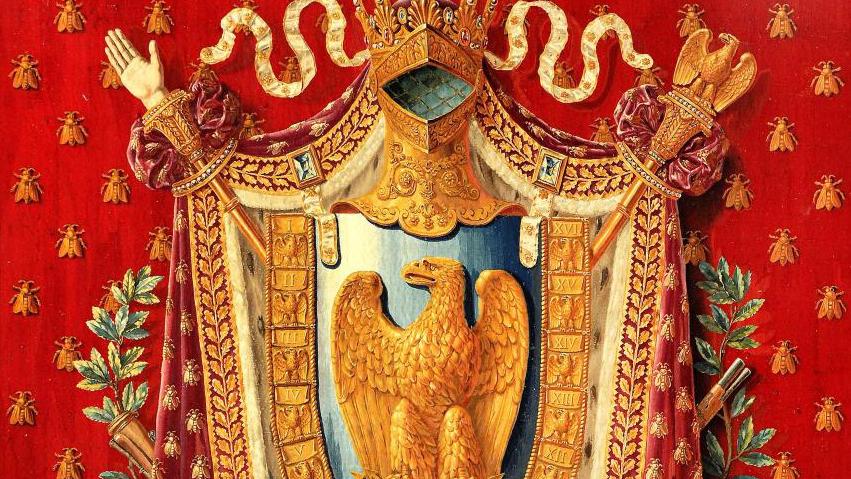From the Tuileries to Versailles, Napoleon Bonaparte sought a palace worthy of his imperial aspirations. But he would never see his most ambitious palatial project through to completion.
The Manufacture of Gobelins, The Great Weaponry of the French Empire (detail), 1808-1811, doorframe for the Emperor's grand cabinet in the Tuileries, tapestry after Jacques-Louis de La Hamayde de Saint-Ange, on a cartoon by François Dubois, Mobilier national.
Isabelle Bideau
Few rulers have had as many palaces as Napoleon Bonaparte. First Consul of the Republic, he settled in the Tuileries Palace in 1800 and chose the Chateau of Saint-Cloud as his secondary residence in 1802. As French Emperor, he expanded the number of properties in France and as part of the "Great Empire" renovated Fontainebleau in 1804 and gave the Chateau of Meudon to his son in 1811. He also undertook a number of grander projects, such as a possible move to Versailles and the construction of a new imperial palace, the "Palace of the King of Rome". However, during the fifteen years of his government, it is not clear whether Napoleon ever managed to find the palace of his dreams...
On 20 th of the Brumaire Year VIII (11 November 1799), the day after the coup d'état which overthrew the French Executive and government, the "provisional consuls" moved to the Luxembourg (Paris), the former palace of the deposed government. Three months later, after renovation work that had been conducted with tremendous fanfare, the Consuls —Bonaparte, Cambacérès and Lebrun— appointed by the new Constitutionmoved to the Tuileries Palace. To settle within these walls was to relive recent political memories: its forced occupation by Louis XVI and Marie-Antoinette , from October 1789 to August 1792, the installation of the National Assembly in the Salle du Manège and then, after the fall of the monarchy, the transfer of the National Convention and its committees to the Tuileries themselves. The interior also contains reminders of the Valois and Bourbon periods, particularly Louis XIV : despite devastation suffered during the Revolution, the decor of the Tuileries has…
com.dsi.gazette.Article : 24016
This content is for subscribers only
You still have 85% left to read.
